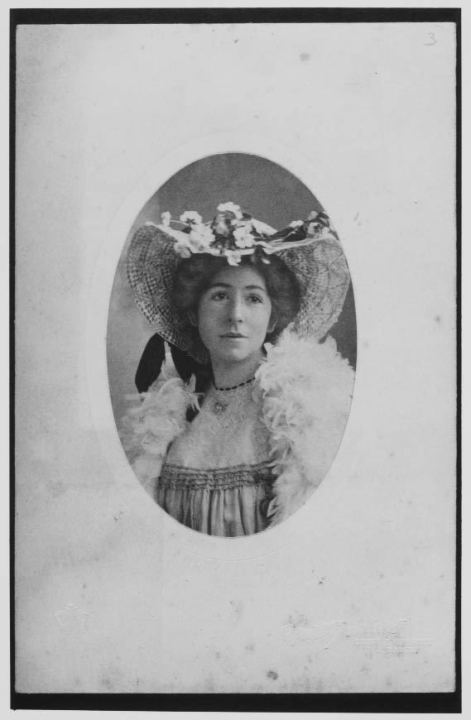Why haven’t we heard of Phillis Bottome? In her 60-year career she published 33 novels, several of them bestsellers, short stories, essays, biographies and memoirs.
Why haven’t we heard of Phyllis Bottome? In her 60-year career she published 33 novels, several of them bestsellers, short stories, essays, biographies and memoirs. She lectured widely in Britain and America. She was translated into nine languages. Her 1937 novel The Mortal Storm predicted the horrific consequences of Fascism. MGM made a film of it, starring James Stewart — the studio’s first openly anti-Nazi film. It premiered in America in 1940, just as Hitler’s troops entered Paris, and was arguably influential in persuading the US to abandon its isolationist stance.
Phyllis (I really can’t call her ‘Bottome’) was a heroic figure. The BBC news, announcing her death in 1963, called her ‘the champion of the underprivileged and the misunderstood’. During the Great War she worked for the relief of Belgian refugees, as well as assisting John Buchan at the Department of Information. In Vienna in 1920, where her husband Ernan Forbes Dennis was a diplomat, she helped to procure food and medical supplies for the starving city. Later, in Britain, she was a tireless campaigner on behalf of Jewish refugees and an outspoken critic of appeasement. After the second war, living in Jamaica, she chronicled the dismantling of the empire and attacked what she called ‘the silliest and most arrogant of all human delusions — race superiority’.
The product of a dysfunctional Anglo-American family, Phyllis had an unstable childhood and a patchy education. The Bottomes were middle-class, but there was no financial cushion. Ernan, her beloved but restless and vacillating husband, went through periods of earning little or nothing; the couple relied on what Phyllis could make through writing. Her achievement is all the more remarkable given her lifetime of ill-health. Her demanding sister Wilmett died of tuberculosis in 1901, whereupon 19-year-old Phyllis developed the disease. She had disregarded the doctor’s order not to kiss her dying sister.
Ironically, the ‘White Death’ saved her creative life. She escaped her stifling family by spending months on end taking cures in Alpine air. She forged fulfilling friendships with fellow-sufferers — her gift for friendship was limitless. The journalist Dorothy Thompson, the sexually predatory poet Edna St Vincent Millay, Max Beerbohm, Ezra Pound (she challenged his abhorrent politics but remained a loyal friend), Daphne du Maurier, Lady Violet Bonham Carter, Ben Nicholson and Barbara Hepworth, the writers Storm Jameson, Pamela Hansford Johnson and Colin Wilson, the dancer Albertina Rasch, the violinist Robert Pollak, were all intimates. Ivor Novello, who had a crush on the handsome Ernan and resented losing him to marriage, at first shunned Phyllis, but was won round by her charm. In the 1920s, isolated in the mountain village of Kitzbühel by Phyllis’s health, she and Ernan established a reform school for difficult British public schoolboys; one of their most challenging cases was Ian Fleming. He became a friend; it seems likely that Phyllis was the only woman he ever respected.
The most significant friendship was with Alfred Adler. Meeting him, said Phyllis, was ‘the greatest event of my life.’ Her interest in Adler’s theory of ‘Individual Psychology’ was used to powerful effect in her fiction.
Phyllis spent significant periods in England, America, Switzerland, Austria, France, Germany, Italy and Jamaica. Wherever she lived she was, says Pam Hirsch, ‘an engaged inhabitant’, empathetic and politically acute. Ever the chronicler of her times, she regarded fiction as ‘the soul of history’. Old Wine, her novel of 1924, concerns the fall of the Austro-Hungarian Empire. In London Pride (1941) an East End family endure the Blitz. Under the Skin (1950) describes racial tension in Jamaica. Eldorado Jane (1956) has for its heroine a delinquent sexually abused teenage girl. Why has such a bold and varied body of work dropped from the public consciousness?
The financial pressure that made Phyllis so prolific a writer diluted the quality of her prose. Artistically, less might have been more. But, says Hirsch, she is also a victim of the academic process that has established modernism as the official literary culture of the first half of the 20th century. Phyllis was a realist, not a modernist. Hirsch regards her lively and well-researched biography as an ‘important salvage work’, and I agree; Phyllis Bottome deserves immense respect.







Comments